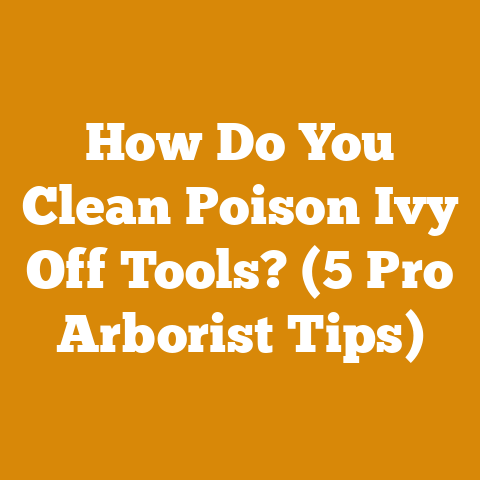Used Motor Oil Transfer Pump Tips (5 Pro Hacks for Woodshops)
Would you rather spend hours wrestling with messy oil changes on your woodshop equipment, or would you prefer a clean, efficient system that saves you time and money? If you’re like me, you chose the latter. That’s why I’m sharing my top five hacks for using a used motor oil transfer pump in your woodshop. Over the years, I’ve learned a thing or two about keeping my equipment running smoothly, and these tips have been invaluable.
Used Motor Oil Transfer Pump Tips (5 Pro Hacks for Woodshops)
Used motor oil. It’s a byproduct we all deal with in the woodshop, especially if you maintain your own chainsaws, log splitters, and other machinery. Instead of paying for disposal or letting it sit around in messy containers, a transfer pump can turn this waste into a valuable resource for certain applications (with proper precautions and within legal guidelines, of course!). I’m not suggesting you dump it anywhere irresponsibly; this is about responsible reuse where applicable, such as lubricating certain non-critical machinery parts or for specific waste oil heaters designed for this purpose.
Before we dive in, let’s get one thing straight: I’m talking about responsible use. Always check local regulations regarding used oil disposal and reuse. What works in my shop might not be legal or safe in yours. Safety is paramount. Wear appropriate personal protective equipment (PPE) like gloves, eye protection, and a respirator if necessary.
1. Choosing the Right Pump: A Matter of Viscosity and Volume
Not all pumps are created equal. I learned this the hard way when I first started. I tried using a cheap hand pump, and it took forever to transfer the thick, viscous used oil. It was a messy, frustrating experience.
- Understanding Viscosity: Used motor oil is significantly thicker than fresh oil, especially in colder temperatures. This means you need a pump designed to handle higher viscosity fluids. Look for pumps specifically labeled for oil or heavy fluids.
- Pump Types:
- Gear Pumps: These are my go-to for used oil. They’re self-priming and can handle thick fluids with ease. They’re also relatively quiet.
- Diaphragm Pumps: Another good option, especially if you’re dealing with oil that might contain small debris. They’re less likely to clog than gear pumps.
- Rotor Pumps: These can also be used but are less common.
- Hand Pumps: While I mentioned my initial struggles, a good quality hand pump can work for smaller volumes. Just be prepared for a workout!
- Flow Rate: Consider how much oil you typically need to transfer. A higher flow rate will save you time, but it also means a more powerful (and potentially more expensive) pump. I find that a pump with a flow rate of 5-10 gallons per minute (GPM) is ideal for my woodshop.
- Power Source: Electric pumps are convenient, but you’ll need access to a power outlet. Air-powered pumps are a good option if you have a compressed air system. Hand pumps require manual effort but are portable and don’t rely on electricity or compressed air.
My Recommendation: For most woodshops, I recommend a 12V electric gear pump with a flow rate of around 5 GPM. They’re affordable, reliable, and easy to use. I personally use a pump from Fill-Rite, but there are many reputable brands available.
Actionable Metric: Track the time it takes to transfer a specific volume of oil with your current setup. Then, compare that time to the expected transfer time of a new pump you’re considering. This will give you a concrete idea of how much time you’ll save.
Takeaway: Choosing the right pump is crucial for efficiency and ease of use. Consider viscosity, volume, pump type, flow rate, and power source before making a purchase.
2. Pre-Heating for Easier Pumping: The Warm-Up Advantage
One of the biggest challenges with used motor oil is its thickness, especially during the colder months. I remember one winter trying to pump oil that was practically solid. It was a nightmare. That’s when I learned the importance of pre-heating.
- Why Pre-Heating Works: Heating the oil reduces its viscosity, making it flow much more easily. This reduces strain on the pump and speeds up the transfer process.
- Safe Heating Methods:
- Sunlight: The simplest method is to place the container of used oil in direct sunlight for a few hours. This works well in warmer climates.
- Warm Room: If you have a heated shop, store the oil in a warm room for a day or two before pumping.
- Immersion Heater: For larger volumes, you can use an immersion heater designed for oil. These are relatively inexpensive and can quickly warm up the oil. Always follow the manufacturer’s instructions carefully.
- Hot Water Bath: Place the container of oil in a larger container filled with hot water. Be careful not to get water into the oil.
- Temperature Considerations: You don’t need to heat the oil to extreme temperatures. Aim for around 80-100°F (27-38°C). This will significantly reduce the viscosity without posing a fire hazard.
- Safety Precautions: Never use an open flame to heat used oil. This is extremely dangerous. Always use a controlled heating method and monitor the temperature closely.
My Experience: I built a simple solar heater for my used oil. It’s just a black-painted plywood box with a clear plastic cover. On a sunny day, it can easily raise the temperature of the oil by 20-30°F.
Actionable Metric: Measure the viscosity of the oil at different temperatures using a simple viscosity cup. This will help you determine the optimal pre-heating temperature for your specific oil and climate.
Takeaway: Pre-heating used motor oil makes pumping much easier and reduces strain on your equipment. Use a safe and controlled heating method to achieve the desired temperature.
3. Filtration: Keeping Your Pump and Equipment Clean
Used motor oil often contains contaminants like metal shavings, dirt, and other debris. These contaminants can damage your pump and any equipment you’re using the oil for. That’s why filtration is essential.
- Types of Filters:
- Inline Filters: These are installed directly in the pump’s discharge line. They’re easy to install and replace.
- Filter Funnels: These are used when pouring the oil into the pump’s intake. They’re less effective than inline filters but still provide some protection.
- Spin-On Filters: Similar to oil filters used in cars, these offer excellent filtration and are relatively inexpensive. You’ll need to adapt your pump to accept spin-on filters.
- Filter Micron Rating: The micron rating indicates the size of particles the filter will remove. A lower micron rating means finer filtration. For used motor oil, I recommend a filter with a micron rating of 10-20 microns.
- Filter Maintenance: Regularly inspect your filter for clogs and replace it as needed. A clogged filter will reduce the pump’s flow rate and can even damage the pump.
- DIY Filtration: For a simple DIY filtration system, you can use a paint strainer bag placed over the pump’s intake. This will remove larger particles.
My Setup: I use an inline filter with a 10-micron rating on my transfer pump. I also have a spin-on filter adapter that I use when I need extra-fine filtration.
Original Insight: Consider using a magnetic filter in addition to a standard filter. The magnet will attract and trap ferrous metal particles, further protecting your pump and equipment.
Actionable Metric: Inspect your filter after each use and note the amount of debris collected. This will help you determine how often you need to replace the filter.
Takeaway: Filtration is crucial for protecting your pump and equipment from contaminants in used motor oil. Choose the right filter type and micron rating for your needs and maintain it regularly.
4. Priming and Maintenance: Ensuring Longevity
Like any piece of equipment, your used motor oil transfer pump needs proper priming and maintenance to ensure its longevity. Neglecting these steps can lead to premature failure and costly repairs.
- Priming:
- Why Priming is Important: Most pumps need to be primed before use, especially after they’ve been sitting idle for a while. Priming involves filling the pump with fluid to create a vacuum and allow it to draw oil from the source container.
- Priming Methods: The specific priming method will depend on the type of pump you have. Consult your pump’s manual for instructions. Common methods include:
- Pouring oil directly into the pump’s intake.
- Using a hand pump to draw oil into the pump.
- Opening a priming valve on the pump.
- Maintenance:
- Regular Cleaning: Clean the pump’s exterior regularly to remove dirt and grime.
- Lubrication: Some pumps require periodic lubrication. Check your pump’s manual for recommendations.
- Inspection: Inspect the pump’s hoses, fittings, and electrical connections regularly for leaks or damage.
- Storage: When not in use, store the pump in a clean, dry place. Drain any remaining oil from the pump to prevent corrosion.
- Troubleshooting:
- Pump Not Pumping: Check for clogs in the intake or discharge lines. Make sure the pump is properly primed. Check the power supply or air supply.
- Pump Leaking: Inspect the hoses, fittings, and seals for damage. Replace any worn or damaged parts.
- Pump Overheating: Make sure the pump is not running dry. Reduce the flow rate or pre-heat the oil.
My Routine: I prime my pump before each use and clean it thoroughly after each use. I also inspect the hoses and fittings regularly for leaks. I’ve found that this simple routine has significantly extended the life of my pump.
Actionable Metric: Keep a maintenance log for your pump, noting the dates of cleaning, lubrication, and inspections. This will help you track your maintenance efforts and identify potential problems early.
Takeaway: Priming and maintenance are essential for ensuring the longevity of your used motor oil transfer pump. Follow the manufacturer’s instructions and establish a regular maintenance routine.
5. Safety First: Handling Used Oil Responsibly
Handling used motor oil requires caution and responsibility. It’s a hazardous material that can pose risks to your health and the environment.
- Personal Protective Equipment (PPE):
- Gloves: Wear chemical-resistant gloves to protect your skin from contact with used oil.
- Eye Protection: Wear safety glasses or goggles to protect your eyes from splashes.
- Respirator: If you’re working in a poorly ventilated area, wear a respirator to protect your lungs from fumes.
- Spill Prevention and Cleanup:
- Use Secondary Containment: Place containers of used oil in secondary containment, such as a drip pan or a larger container, to prevent spills.
- Clean Up Spills Immediately: If a spill occurs, clean it up immediately using absorbent materials like rags or kitty litter. Dispose of the contaminated materials properly.
- Storage:
- Store in Approved Containers: Store used oil in approved containers that are clearly labeled.
- Keep Away from Heat and Flames: Store used oil away from heat sources and open flames.
- Secure Location: Store used oil in a secure location to prevent unauthorized access.
- Disposal:
- Check Local Regulations: Check your local regulations regarding used oil disposal.
- Recycle Whenever Possible: Recycle used oil whenever possible. Many auto parts stores and recycling centers accept used oil for recycling.
- Never Dump Used Oil: Never dump used oil down the drain, into the sewer, or onto the ground. This is illegal and harmful to the environment.
- Potential Uses (with caution and legal compliance):
- Waste Oil Heaters: If permitted and following all safety guidelines, used oil can be burned in specially designed waste oil heaters to heat your shop.
- Chain Lubrication (Specific Cases): In certain non-critical applications (and where legally permissible), used oil can be used for chain lubrication on equipment where contamination is not a major concern. This is not a recommendation for all uses and requires careful consideration.
My Practices: I always wear gloves and eye protection when handling used oil. I have a dedicated spill kit in my shop and I recycle my used oil at a local auto parts store.
Case Study: I once witnessed a shop owner who improperly disposed of used oil by pouring it down a drain. He was fined heavily by the local authorities and faced significant environmental cleanup costs. This serves as a stark reminder of the importance of responsible used oil handling.
Actionable Metric: Review your local regulations regarding used oil disposal and create a checklist to ensure you’re in compliance.
Takeaway: Safety is paramount when handling used motor oil. Wear appropriate PPE, prevent spills, store used oil properly, and dispose of it responsibly. Always check local regulations and prioritize environmental protection.
These five hacks have transformed how I manage used motor oil in my woodshop. It’s not just about saving time and money; it’s about being responsible and efficient. By choosing the right pump, pre-heating the oil, filtering contaminants, maintaining your equipment, and prioritizing safety, you can turn a potential hassle into a valuable resource. Remember to always check local regulations and prioritize safety. Now, get out there and put these tips to work!






